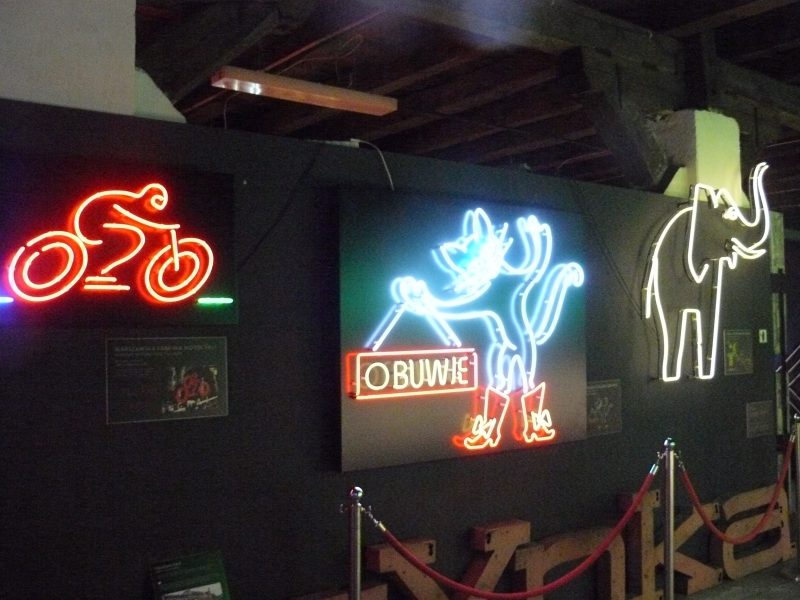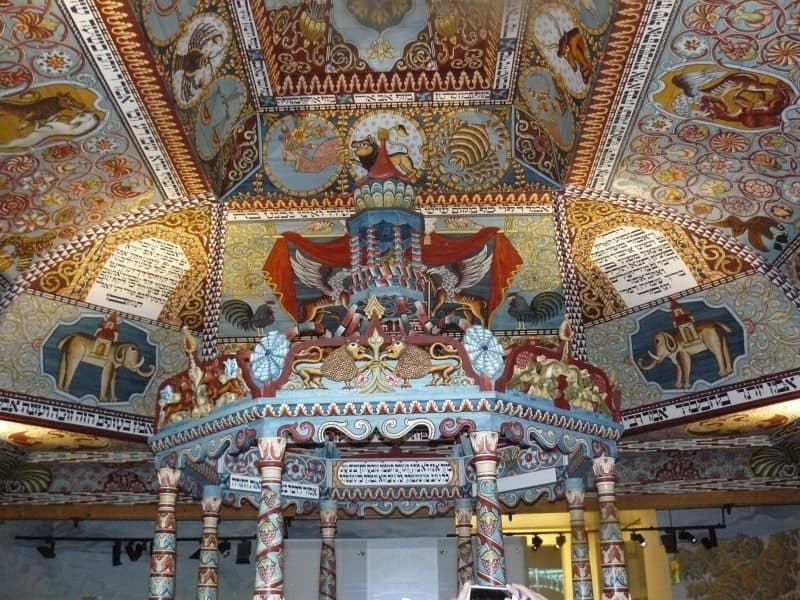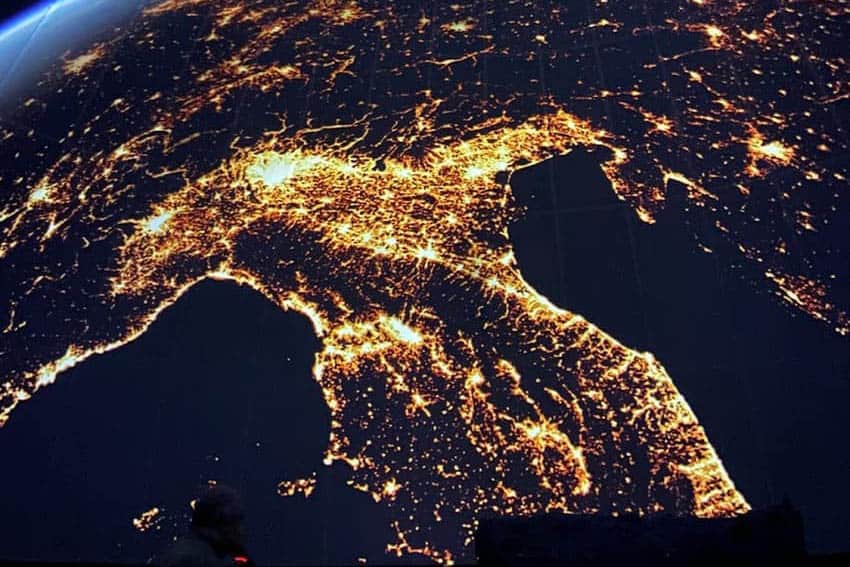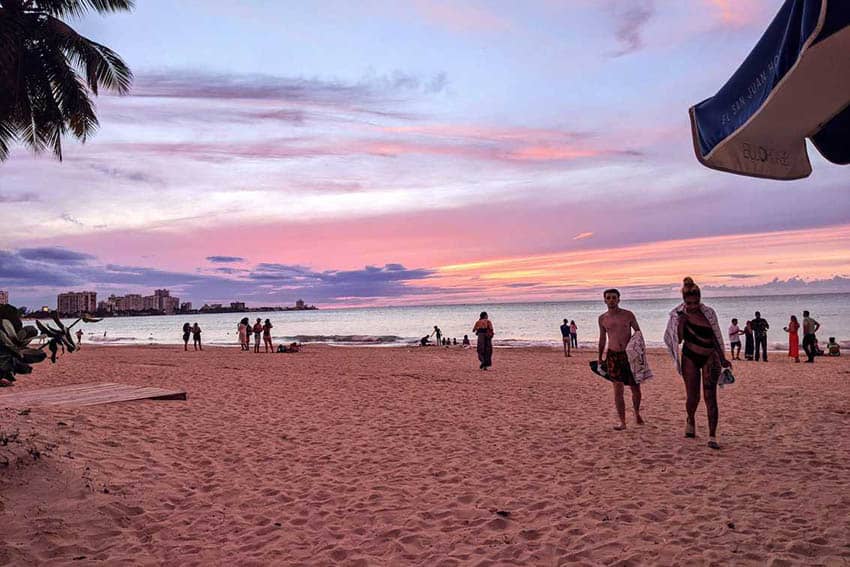
Waking Up in Warsaw, Poland: Polish Airlines’ Dreamliner Experience
By Stephen Hartshorne
GoNOMAD Associate Editor

I thought I was dreaming. There I was in Newark Airport and the fire engines were spraying water on a jetliner.
Then I was on board the plane, but I wasn’t jammed into a narrow seat the way I usually am. There was lots of elbow room and these lovely ladies in colorful kerchiefs kept bringing me delicacies and vodka and the juice of black currants.
I had my own private movie screen and a huge selection of movies and television shows. Then my seat magically turned into a bed and I had a comfortable snooze until one of the ladies brought me a lovely breakfast of fruit and yogurt and smoked duck.
Then the pilot announced we would soon be landing in Warsaw, and I realized it wasn’t a dream at all; it was Polish Airlines’ Dreamliner flight from Newark to Warsaw, and I was on the maiden voyage. (That’s why the fire engines were hosing down the plane; it’s a tradition when a new route is begun.)
It was by far the most comfortable and enjoyable plane ride I have ever taken.
Polish Airlines (LOT) has been growing by leaps and bounds — about 20 percent per year — and has added more than 27 new routes in the past year, including Los Angeles, Seoul, and Kazakhstan.
LOT CEO Rafal Milczarski says more than 70,000 Poles travel to Newark each year and adds that the route will also be used by passengers from Ukraine, Hungary, Romania, and Belarus.
A Dream City
Warsaw is itself a dream city: beautiful parks everywhere like the Lazienki Park with peacocks and pheasants wandering around, the Saxon Garden, with more than 100 species of trees, and the spacious Krasinski Palace Garden with its imposing statue of King John III Sobieski, who saved Europe from a Turkish invasion in 1683.

Warsaw has world-class opera and ballet companies, the National Philharmonic Orchestra, four major universities and 62 colleges, more than 30 theatres, and hundreds of museums.
A Jazz Capital
The city is also known for its vibrant nightlife — especially jazz. The Jazz Jamboree started in 1958, has hosted jazz greats like Duke Ellington, Miles Davis, Thelonious Monk, Dizzy Gillespie, Dave Brubeck, Benny Goodman, Herbie Hancock, and many others.
To this day, Poland is a major incubator of jazz talent with hundreds of small venues all over the country.
Warsaw has thousands of restaurants serving every kind of food you can imagine. The local cuisine is on the hearty side, lots of meat, potatoes, and other winter vegetables, mushrooms, cabbage and hundreds of different soups, but there are lots of vegan, vegetarian, non-dairy, and gluten-free options.
On our tour, hosted by the Polish National Tourist Office and Polish Airlines, we had two vegans, one non-dairy and one gluten-free, and everybody dined like royalty.
At the center of the city is the towering Palace of Culture and Science, a relic of the Stalinist era, which used to dominate the cityscape, but now is being surrounded by skyscrapers emblematic of the post-Communist era.

Most Varsovians, as the citizens of Warsaw, call themselves, regard the building as a symbol of Soviet oppression, but it still serves as a venue for cultural events with a 3,000-seat auditorium, eight cinemas, four theatres, offices, and a university on the 11th and 12th floor.
It’s observation deck also offers a great 360-degree view of Warsaw.
The Newest Old City
The crowning glory of this dream city is the Old Town and the Royal Castle, the newest old town in Europe and a UNESCO World Heritage site, painstakingly reconstructed after the city’s utter destruction by the Nazis in World War II.
The original Royal Castle was built by King Sigismund the Third who moved his court from Krakow to Warsaw in 1596. Also restored was the massive Barbican that surrounds the city gate, as well as portions of the city wall built in the 14th century.
At the center of the Old Town Marketplace is a statue of a mermaid brandishing a sword and shield, the emblem of Warsaw since its earliest days.
She is said to be Sawa, a daughter of Triton and a sister of the Little Mermaid in Copenhagen who swam up the Vistula and was captured and imprisoned by a greedy merchant.
She was rescued by a fisherman named Wars and so the city became known as Wars-Sawa.

Our group stayed at the palatial Regent Warsaw Hotel, known for its beautifully appointed rooms, its stately public areas, its striking artwork, and its opulent breakfast buffet.
The hotel has its own apiary on the roof, home to some 350,000 bees, which gather pollen in nearby Lazienki Park. The honey is used at the breakfast buffet and at the hotel’s restaurant, Venti-tre.
We visited the Praga District where old industrial buildings have been converted into artists’ studios, galleries, cinemas, pubs, and theatres.
In the Soho Factory, a former motorcycle factory, we visited the Neon Museum, a very popular attraction detailing the history of neon signs in Poland.
We also visited the monument to Frederick Chopin, Warsaw’s favorite son, where you can push a button on the bench and it plays tunes from Chopin.
The Nightmare
We also visited the Warsaw Uprising Museum, the Polin Museum of the History of Polish Jews, and the Warsaw Zoo, once the home of Jan and Antonina Zabinski, the heroes of the recent film, “The Zookeeper’s Wife.”

These sites are a testament to the nightmare that Poland experienced in the 20th century after being invaded simultaneously by the Soviet Union and Nazi Germany in 1939, then suffering grievously under the Nazi occupation, which was followed by nearly half a century of Soviet oppression.
The Warsaw Uprising Museum has lots of photographs, artifacts, audio-visual displays and other testimonies of the utter destruction of the city by the retreating Nazis in 1944.
It gives you a real sense of what it was like to live under the occupation and to see the devastation that followed the uprising of the Polish Underground.
Many cities were subject to aerial bombing during World War II, but Warsaw was subject to complete destruction by crews on the ground — special “burning and destruction detachments” that destroyed 85 percent of the city.
One of the most compelling exhibits is a film taken from a Soviet bomber showing the ruins of the city.
And, of course, there is an implicit indictment of the Soviet Union, because the Red Army deliberately halted its advance to allow the Nazis to complete their work of destruction.
The Polin Museum
In the Polin Museum of the History of Polish Jews is am imposing structure designed by Finnish architects Rainer Mahlamäki and Ilmari Lahdelma and built on the site of the Warsaw ghetto. Here artistic displays illuminate the history and culture of the millions of Jewish people who made Poland their home for a thousand years.

There’s a model of a Jewish village and a synagogue and other displays that show how Poland’s religious tolerance created a golden age of prosperity.
Also, exhibits that show the horrors of life in the Warsaw Ghetto, where Jews were walled in, starved, and eventually deported to extermination camps.
The Ghetto was ultimately destroyed in 1943 after Jews there resisted deportations. The Waffen SS systematically burned and blew up every single building.

There were 3.3 million Jews in Poland before WWII, and there are 7,000 today.
The Polin Museum voted Museum of the Year by the European Museum Association, celebrates the life and culture of this vanished people.
At the Warsaw Zoo, we toured the home of Jan and Antonina Zabinski, who helped hundreds of Jews escape from the ghetto, as depicted in the film “The Zookeeper’s Wife.”
The Zabinskis have been honored by the State of Israel as “Righteous Among Nations.”
On the day we visited, we were honored to meet Moishe Treis, a survivor of the ghetto, who was hidden here by the Zabinskis when he was five years old.
After a visit to the roof garden at the Warsaw University Library and a tour of Royal Lazienki Park, we were off to Elixir Dom Wodki Restaurant to learn about, and sample, some exquisite Polish vodkas.

It was off to Krakow on Poland’s fast, clean, friendly rail system.
Krakow
If Warsaw attracts the business travelers, Krakow, Poland’ ancient capital, attracts the tourists — about ten million a year.
Nearly all of them come to visit the Wawel Royal Castle, which dates back to the 13th Century, and houses the Czartoryski Museum, home to Leonardo da Vinci’s masterpiece ‘Lady with an Ermine.’
Nearby is Wawel Cathedral where Karol Wojtyla celebrated his first mass as a priest. Wojtyla went on to become archbishop of Krakow and is known to history as Pope John Paul II, a figure who inspired the Solidarity Movement that ultimately liberated Poland from Soviet domination.
Krakow has a huge historic district, largely undamaged by the war and an impressive Main Square in the center of the Old Town with lots of shops and restaurants, as well as the Underground Museum, which details the history of the city.
One of Krakow’s most popular attractions in recent years is the enamelware factory operated by Oskar Schindler, who rescued more than a thousand of his Jewish employees from the concentration camps. Schindler is the only member of the Nazi Party to be buried on Mount Zion in Jerusalem.

Since Steven Spielberg’s 1993 film “Schindler’s List,” which won seven Oscars, people in Krakow have become used to giving directions to the Schindler factory.
The Ultimate Nightmare
Probably the most famous village in Poland is Oswiecim, renamed Auschwitz by the Nazis, the site of the Third Reich’s most notorious concentration camp.
More than two million people from all over the world visit the Auschwitz-Birkenau Museum every year, and this year I was one of them.
It’s difficult to talk about the experience, except to say that, along with the 50 million people who have visited the site since its liberation in 1945, I am a witness to the depths of human depravity.
It’s not just the incredible number of people who were murdered; it’s also the way that they were robbed of their humanity before they died.
I think everyone zeroes in on a different detail presented on the four-hour tour, just as many people were moved by the story of Anne Frank — one little girl among millions.
For me, I don’t know why it was the mountain of combs and hairbrushes; perhaps because these represented the last vestiges of people’s humanity that were taken from them. Then there was the baby’s shoe…
I’m glad that schoolchildren from all over the world are visiting Auschwitz because what happened there should never be forgotten.
World’s Deepest Salt Mine

On our way back to Krakow, our group visited the Wieliczka Salt Mine, which has been worked since prehistoric times.
This cavernous mine is more than 1,000 feet deep with dozens of chambers, all populated by mannequins illustrating different periods in the mine’s history. The mine has three chapels and an enormous cathedral, with exquisite carvings on the walls.
It was back to our cool, comfortable hotel in Krakow, The Galaxy, and a fantastic dinner at a restaurant called Pod Nosem (“under the nose”).
On our last day in Poland, we traveled to the Pieniny Mountains and went rafting through the Dunajec River Gorgeon the border with Slovakia.
We rode on traditional pontoon-style wooden rafts and our guides poled us down the lazy river through some of the most beautiful scenery I’ve ever seen.
We flew back to Warsaw and visited the headquarters of LOT Polish Airlines. They’re opening a museum there with all kinds of interesting exhibits from the history of the company.
The highlight was their flight simulator, which gives you a chance to test your skills as a pilot. I crashed twice.
At last, it was time to bid farewell to our Polish friends and head back to the US. It was wonderful to visit a country that faced the evilest forces in the history of the world and has at last found freedom and prosperity in the 21st Century.
- Greater Palm Springs: Art, Architecture, and Family Fun - April 11, 2019
- Derry, Northern Ireland: Fun and Festivals in the Walled City - August 14, 2018
- Georgia’s Film Industry is Booming - August 18, 2017





